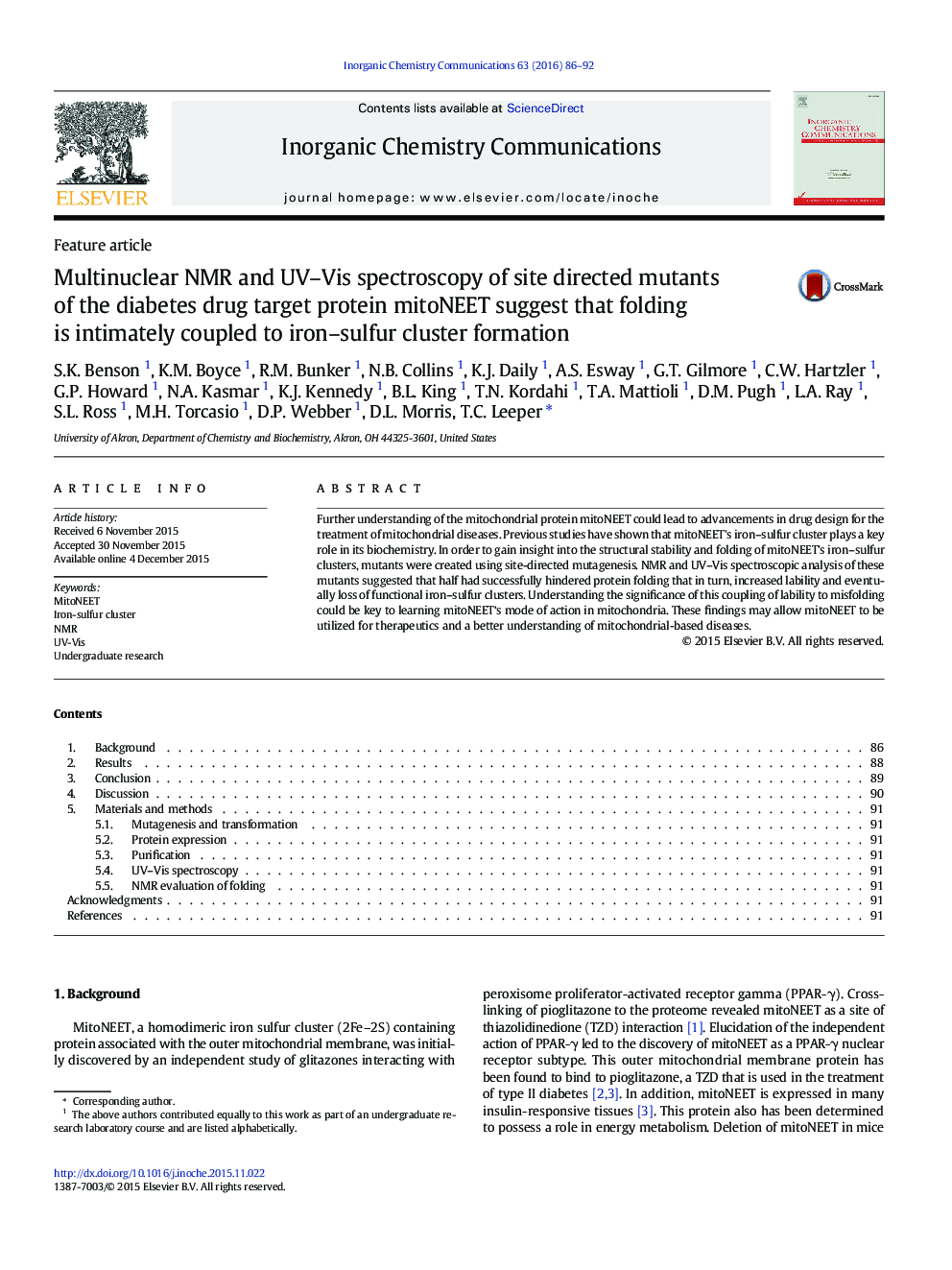| Article ID | Journal | Published Year | Pages | File Type |
|---|---|---|---|---|
| 1305300 | Inorganic Chemistry Communications | 2016 | 7 Pages |
•MitoNEET's inorganic biochemistry was probed by site-directed mutagenesis.•Iron–sulfur cluster stability was determined by NMR and UV/Vis.•2Fe–2S cluster formation is coupled to domain folding.•Authentic research in the classroom can be applied to answer biophysical questions.
Further understanding of the mitochondrial protein mitoNEET could lead to advancements in drug design for the treatment of mitochondrial diseases. Previous studies have shown that mitoNEET's iron–sulfur cluster plays a key role in its biochemistry. In order to gain insight into the structural stability and folding of mitoNEET's iron–sulfur clusters, mutants were created using site-directed mutagenesis. NMR and UV–Vis spectroscopic analysis of these mutants suggested that half had successfully hindered protein folding that in turn, increased lability and eventually loss of functional iron–sulfur clusters. Understanding the significance of this coupling of lability to misfolding could be key to learning mitoNEET‘s mode of action in mitochondria. These findings may allow mitoNEET to be utilized for therapeutics and a better understanding of mitochondrial-based diseases.
Graphical abstractUsing site-directed mutagenesis nineteen undergraduate students investigated the inorganic biochemistry of the CDGSH-type iron sulfur cluster protein and diabetes drug target mitoNEET. NMR and UV–Vis spectroscopy of these mutants confirm the notion that cluster ligation is intimately tied to domain folding.Figure optionsDownload full-size imageDownload as PowerPoint slide
